Skopelos road trip: Car ride around Greece’s greenest island reveals views worthy of Greek gods
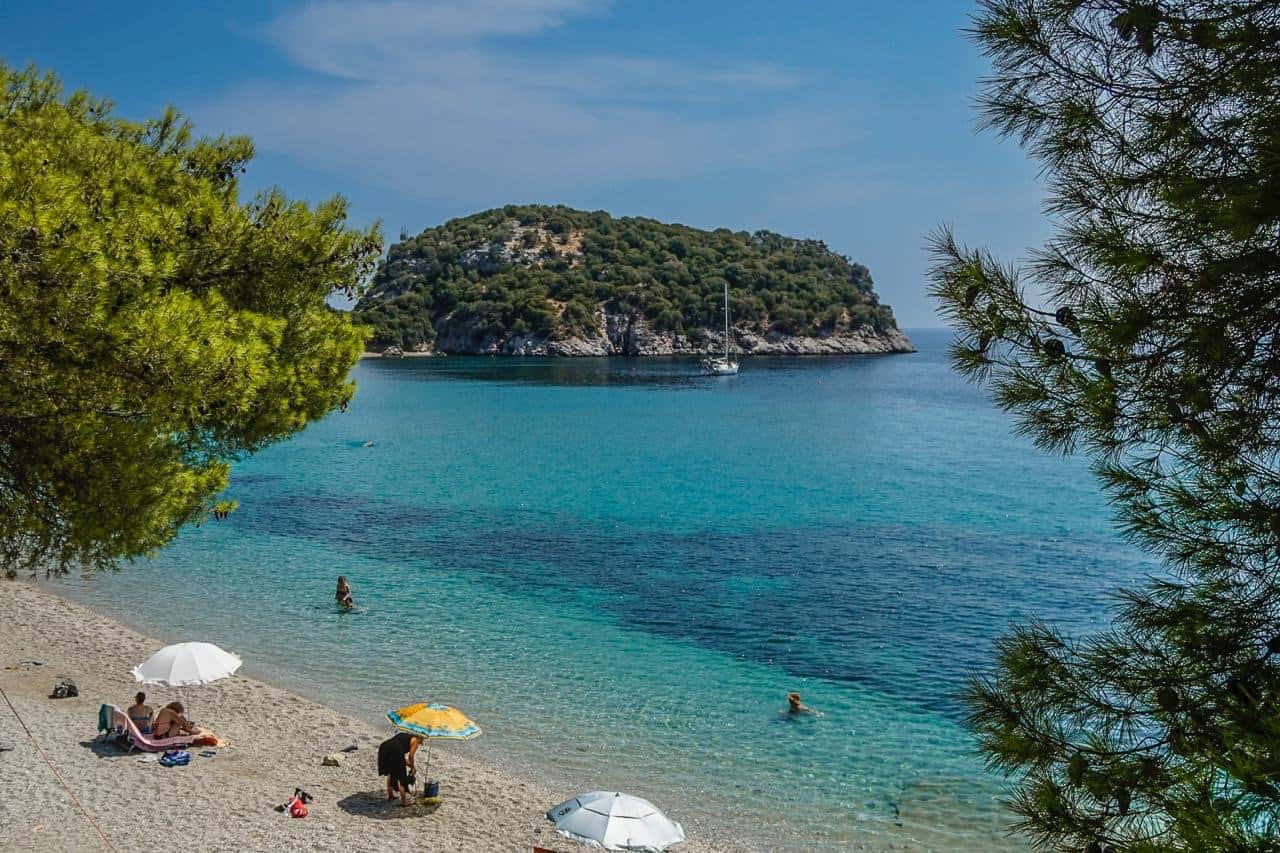
SKOPELOS, Greece – Before going to Greece two weeks ago, I had a Covid scare. Translated, that means slight flu symptoms with a dose of major paranoia.
I woke two days before I was to leave with a slight fever and aches everywhere. Fearing I’d have to eat the flights with no refund and being the selfish SOB that I am, I held off getting swabbed.
The night before I left, I hadn’t improved. But my conscience had. Fearing I’d infect an entire island and be hotel bound nibbling on feta in bed, I reluctantly trudged to my pharmacy and bought the self-Covid test. With my flight leaving in 12 hours, I stared at the little Covid test device waiting for the result. It was one of the longest 15 minutes of my life.
Negative.
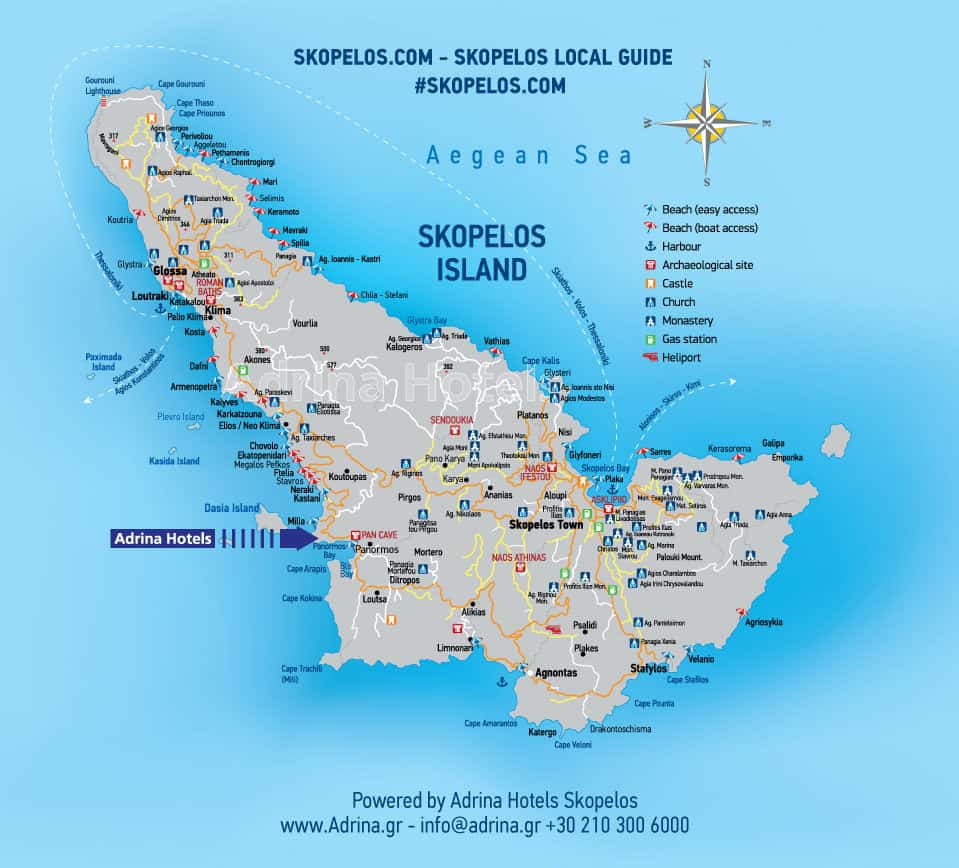
However, the aches and fever didn’t go away. The only thing I felt like doing was lay on a beach. Luckily, I wasn’t go to Nepal.
The problem was this was our fourth straight year on the little isle of Skopelos (pop. 5,000) where we stay in the village of Panormos, population 570. We have had every item on every restaurant menu. The bartenders at our Panormos Beach Hotel know when to pour me my ouzo on ice. Island cats recognize me.
I needed to see the rest of the island. We had seen some of it. We sunbathed on Kastani, where they filmed “Mamma Mia!” the worst film in the history of cinema. We saw Agios Ioannis, the church in the wedding scene of “Mamma Mia” which set modern cinema back to the silent film era. We dined in the northern port town of Glossa. I interviewed a miniature boat builder in the bustling southern port town of Skopelos Town.
But we hadn’t seen the interior. Lots of beaches and ouzo, but not much Greek culture. A trip to a Greek pharmacy and a few Vitamin C pills and Advil later, I got a car and went on a road trip. From the middle of a thick forest to a goat farm, we saw Skopelos unmasked.
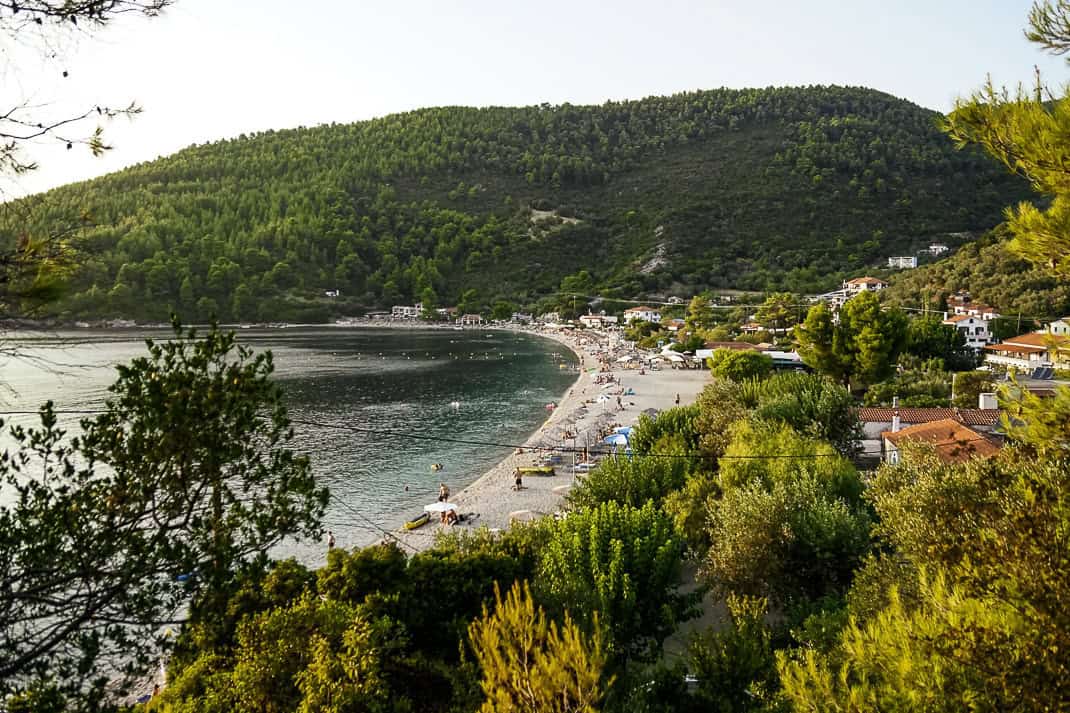
The village of Panormos wasn’t always a sleepy village. In the 6th century B.C., at the height of Ancient Greece, it was one of the island’s three major towns and it’s main port. It was a major shipbuilding center. It’s athletes went to the Olympics in Athens. It was once under the control of Alexander the Great.
The Ottomans destroyed the whole island in 1538 but was soon rebuilt and in the 18th century the ships Skopelos built helped defeat the Ottomans. Glossa sheltered Jews during World War II.
Here’s what Skopelos looks like today.
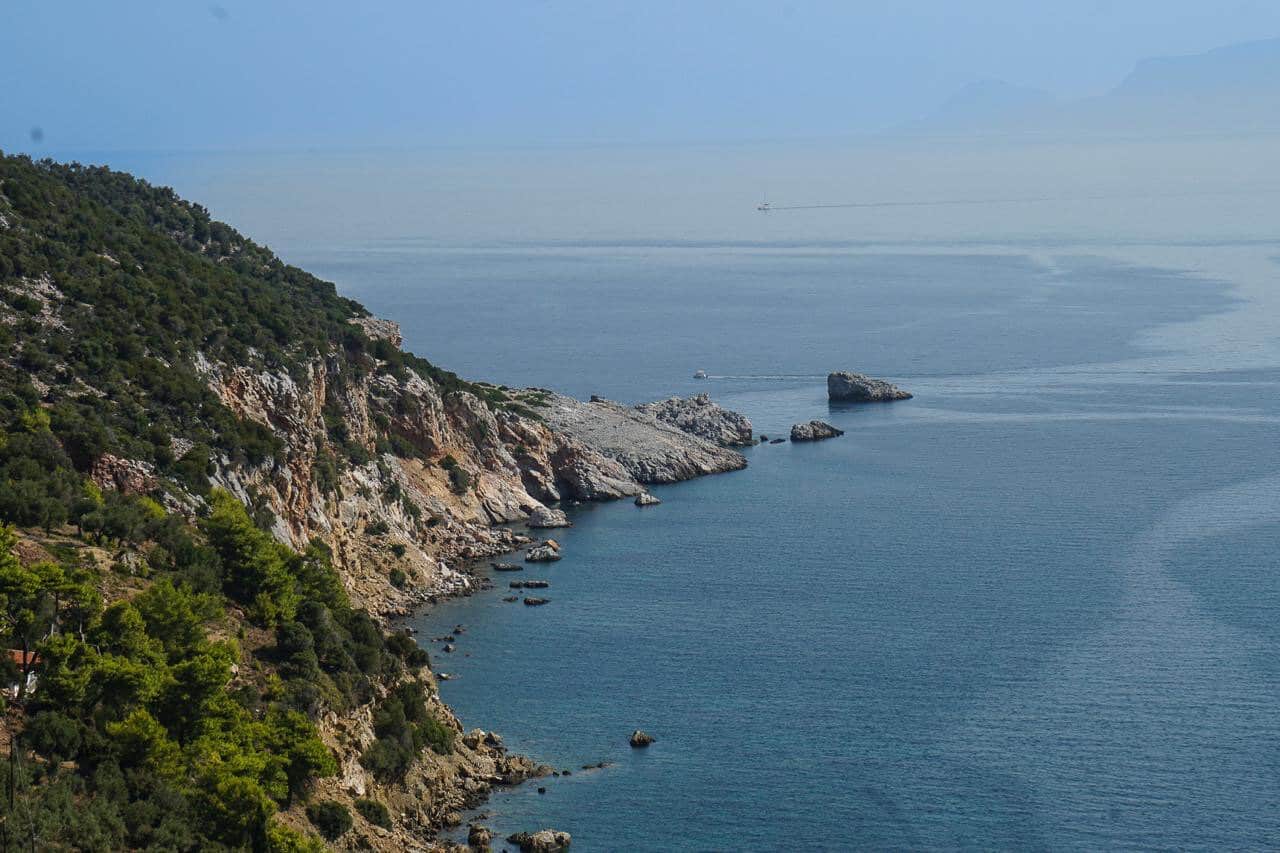
Sentoukia
I sometimes like to point at a random area on a map and just go there. In the center of Skopelos is a space labeled Sentoukia. I was hoping for a quiet Greek village in the hills. Old men drinking ouzo on stoops. Children playing soccer with two trees as goalposts. A donkey wandering through town.
However, Skopelos is the greenest island of Greece’s 6,000 islands. Located 90 miles north of Athens, more than 80 percent of Skopelos is covered with forest. We took the windy road up the hill from Panormos. Trees, trees and more trees. We then wound up on a gravel road leading to a clearing. A construction team was digging.
Sentoukia is not a cute village. It’s basically known for four stone tombs owned by private citizens 2,000 years ago and as a trailhead for numerous trails through the forest.
As we worked our way down the hill, however, we saw spectacular views of the island and Aegean Sea. Skopelos is only 37 square miles (96 square kilometers). It’s only five miles (eight kilometers) at its widest part. From the road we could see a blanket of white-roofed houses with red-tiled roofs cascading into the sea.
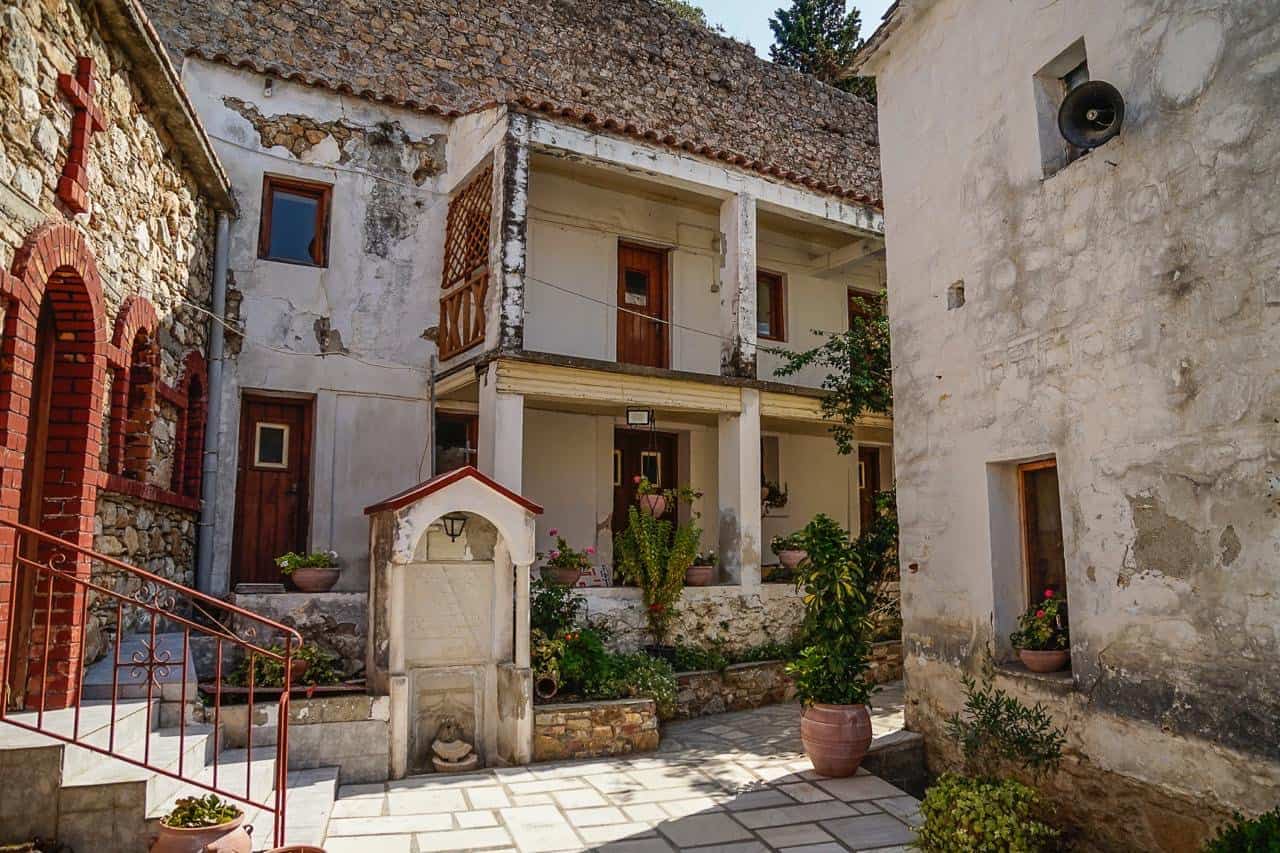
The monasteries
In the southeast corner of the island, past the bustling Skopelos Town, the road winds up through pine and sycamore trees to the island’s religious heart. Skopelos has more than 40 churches and monasteries and at the top of the hill we saw one of its prettiest.
Moni Evangelistrias sits atop a long driveway. This 18th century church was once a refuge for freedom fighters during Greece’s War of Independence against the Ottoman Empire from 1821-1829.
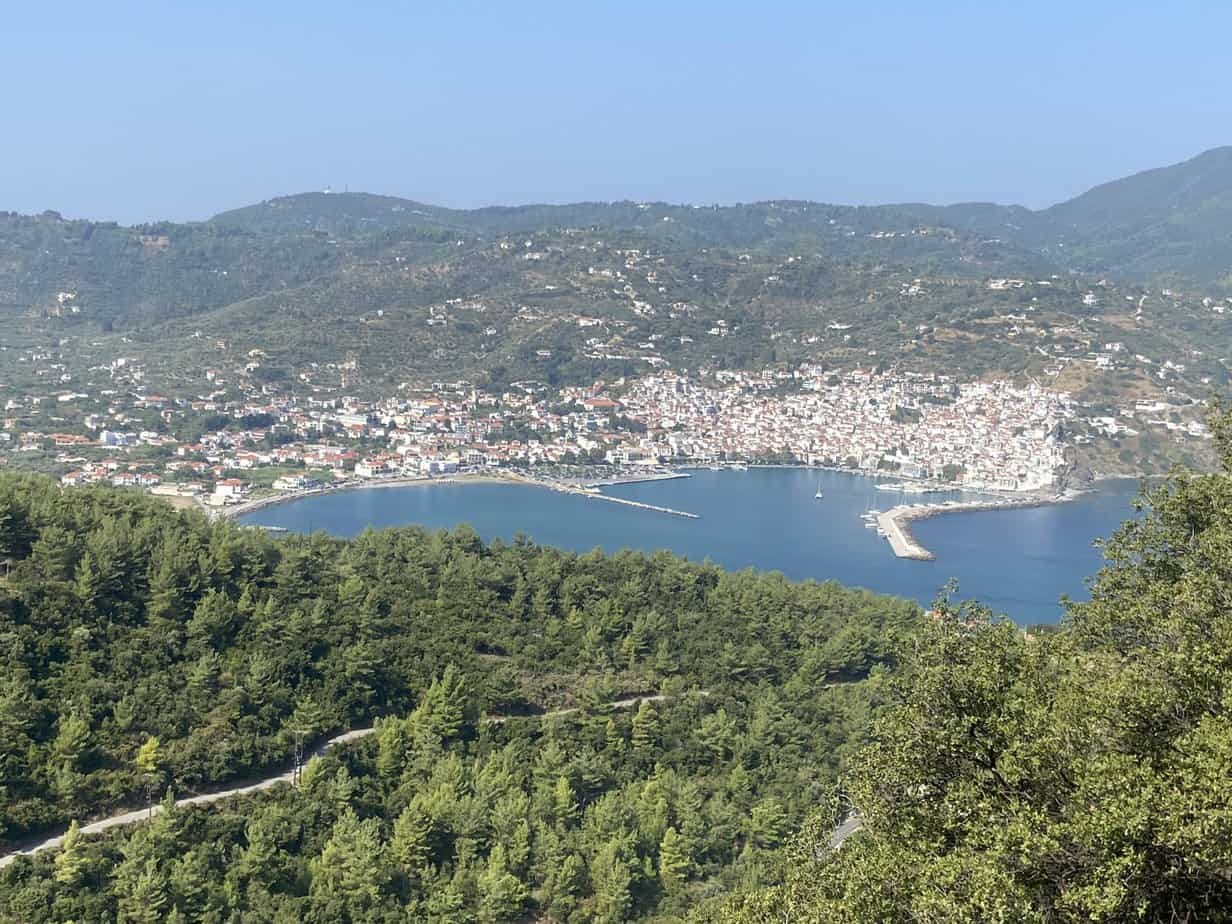
We walked under a crude stone entrance into a white church with red trim. Planters and ferns were everywhere. A small baptistry stood to our left. Orthodox Greek monks scurried around doing repair work.
One politely asked us, in excellent English, to not go past the roped-off area. Orthodox Greek chants poured out from a loudspeaker.
A table sold jams and olive oil made by the monks. Inside a small store I bought a small three-euro painting of Agios Loukas, the patron saint of artists, doctors, surgeons, students and, surprisingly, butchers.
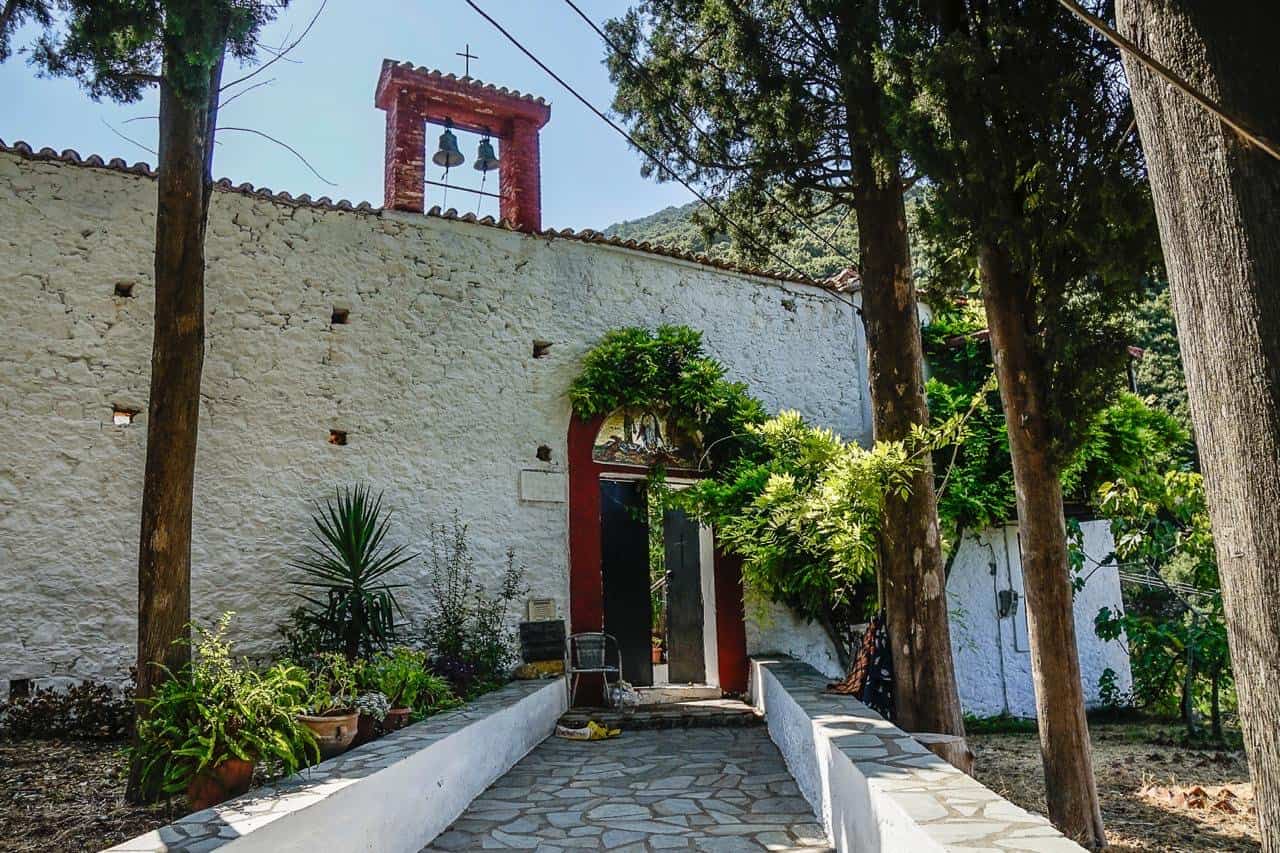
We drove down the hill and back up the other side to Moni Metamorphosis. Dating to the early 16th century, it is Skopelos’ oldest church. We walked through the gleaming white walls past a scowling Greek priest who eyed us suspiciously.
Inside was beautiful. It looked like a plant store with planters and ferns everywhere. In between the trunks of trees surrounding the monastery were gorgeous views of the sea far below.
We heard the beach calling. I heard my stomach. We were in Greece, home of the gastro god known as feta, and my appetite had returned.
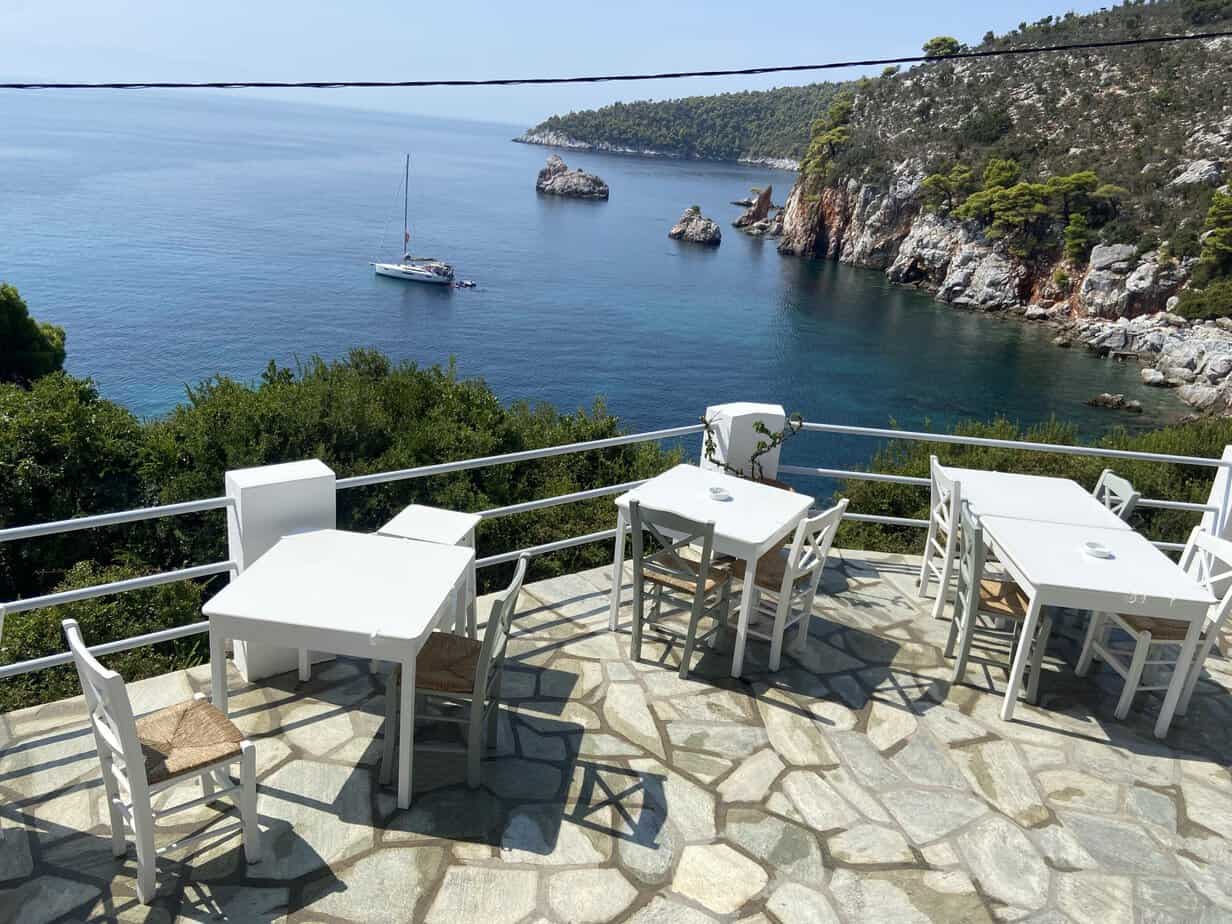
Stafilos Restaurant
The Greek monks looked a little pale. Obviously, they never ventured down the hill and a few clicks south to the beautiful beaches of Skopelos’ southeast coast. We drove down a narrow road past a long string of sunbathers carrying towels, plastic floaters and too many children to count.
We stopped above the beach at a restaurant with one of the best views in the Sporades Island chain. Stafilos Restaurant sits high on a steep slope with a beautiful view of the isolated bay. A lone sailboat bobbed in the water on a sexy, sunny 80-degree day. With a craggy cliff and tufts of trees as a backdrop, two snorkelers headed toward the boat.
I had a lovely chicken souvlaki covered in herbs served with fresh tzatziki sauce for only €12. Coupled with a Mythos beer, served even colder in the island’s signature frozen mug, it could only have felt more Greek if we were eating on Aristotle Onassis’ yacht.
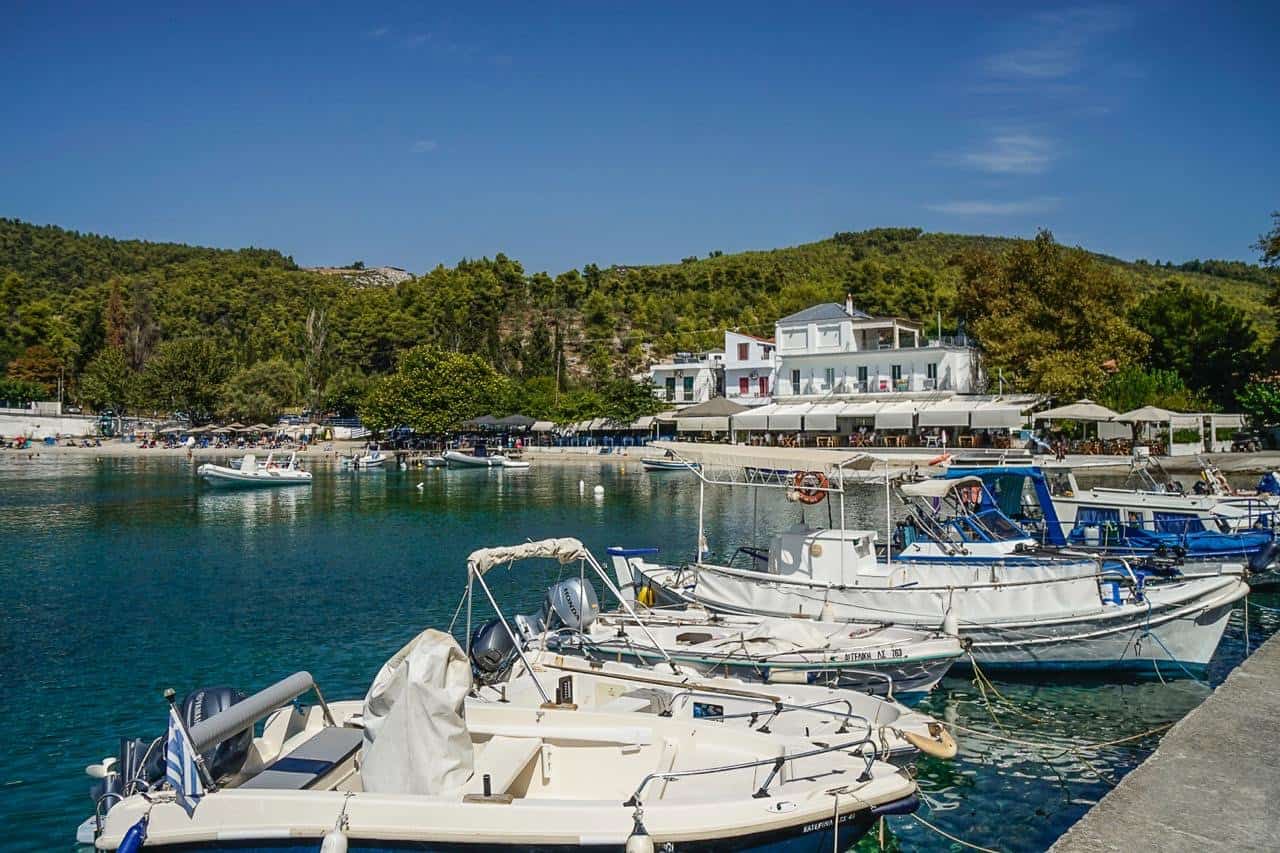
We digested on Validos Beach just long enough to trudge up the hill to the car. We took the coast road to Agnontas, another beach town with a secluded cove and pleasure craft docked in the harbor. It had a string of covered seafood restaurants where I took a seat at the 4M Coffee House and looked at a big yacht cruising slowly through the bay.
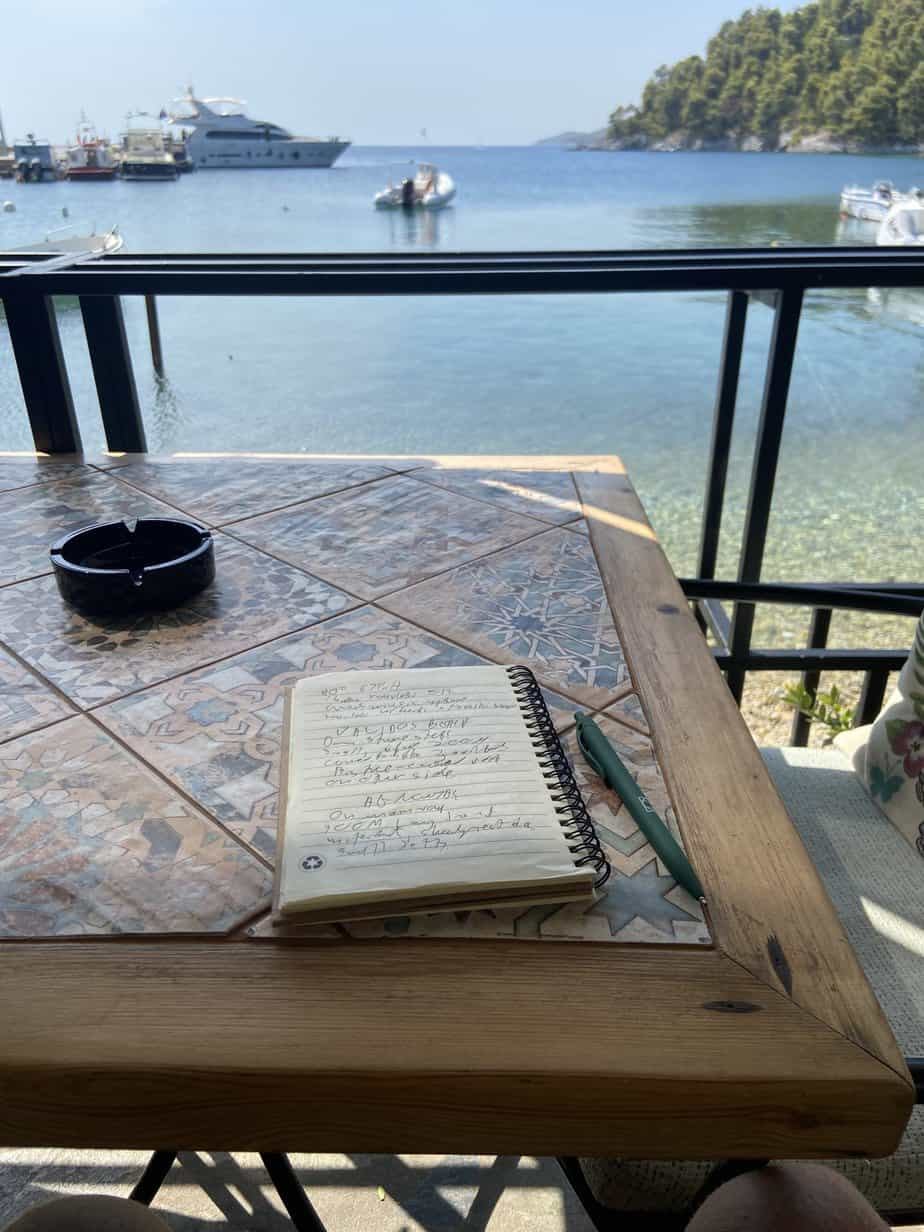
American pop music playing annoyingly on the loudspeaker (While not a music lover, I had become accustomed to the sound of the Greek bouzouki. It made me feel like I was in Greece and not a sports bar in Santa Monica.) However, the 4M had a long list of non-alcoholic drinks and served me the best vanilla milkshake I’ve ever had outside the U.S.
OK, people, so I drank an American milkshake instead of Greek ouzo. I was driving. Give me a MAGA hat.
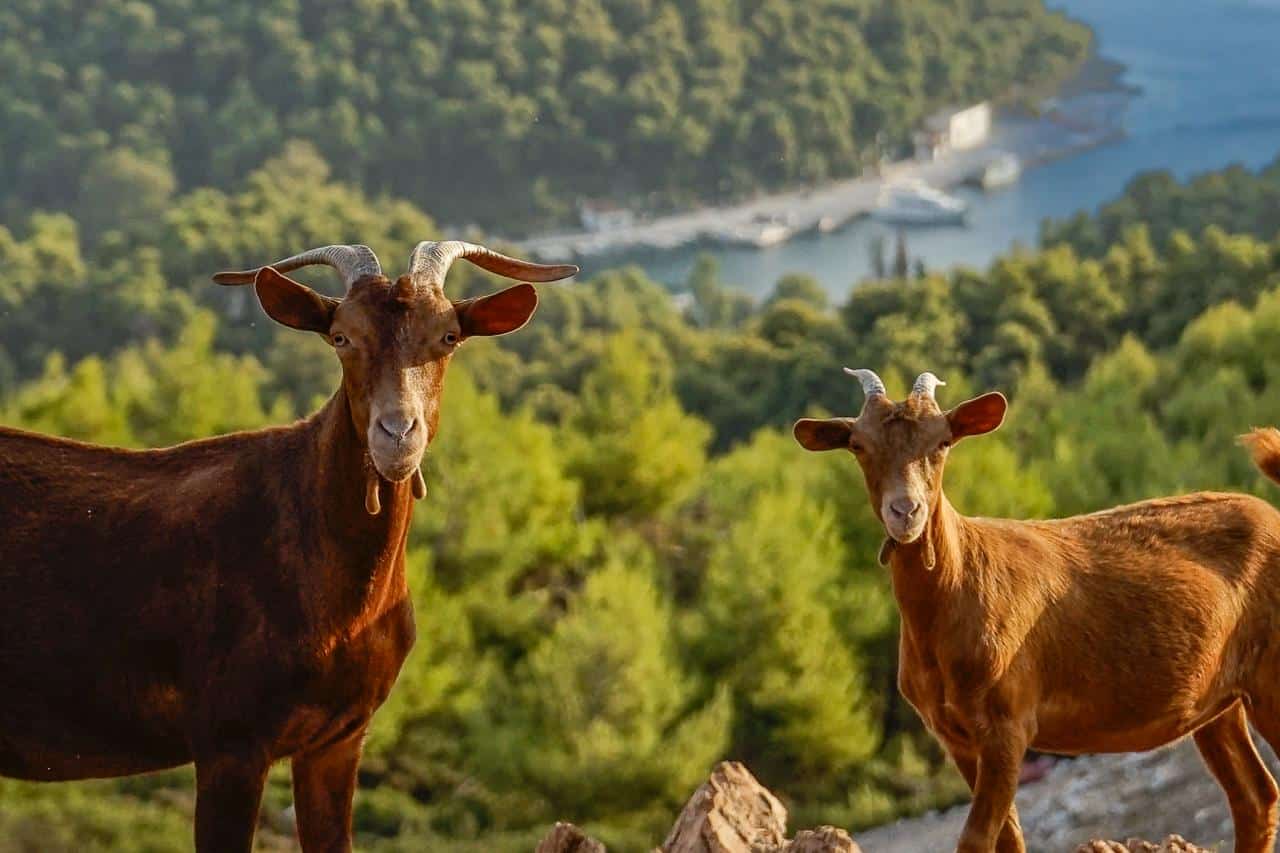
Goat farm
We ended the day next to a helipad. Skopelos has no hospital but it does have a helipad. It has a helipad because it has no hospital. Just down the hill is the biggest cheese farm on the island.
Michelis Gerakis is a sixth-generation goat cheese farmer whose family has had the same factory 200 meters above the sea since 1900. Four towering silos stood next to the house where he works and lives. Around us stood 200 goats, nipping at tufts of grass and feed in wire bins and scurrying away every time we came near.
He sells 11,000 pounds (5,000 kilograms) of goat cheese a year, all to shops around Greece. From a giant brick of cheese in a big bucket, he handed me a chunk. I was never a fan of goat cheese but this raw piece of fresh cheese was delicious, tangier than the feta I’d eaten on Greek salads all week.
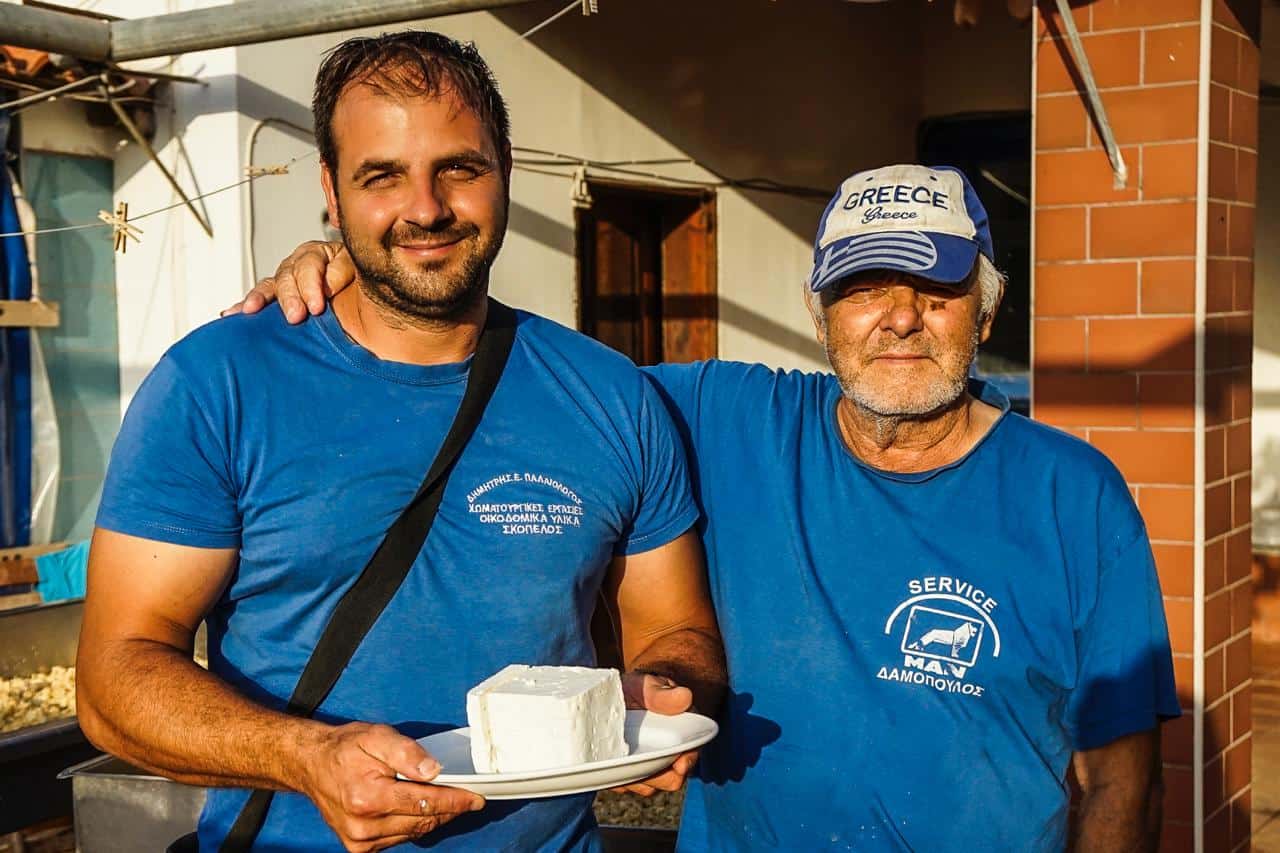
I asked Michelis what he likes about his business, what he likes about goat cheese.
“I like the lifestyle with the animals,” he said through a translator. “They give me calm and balance.”
I say the same about Skopelos. It’s why I will come back every September.
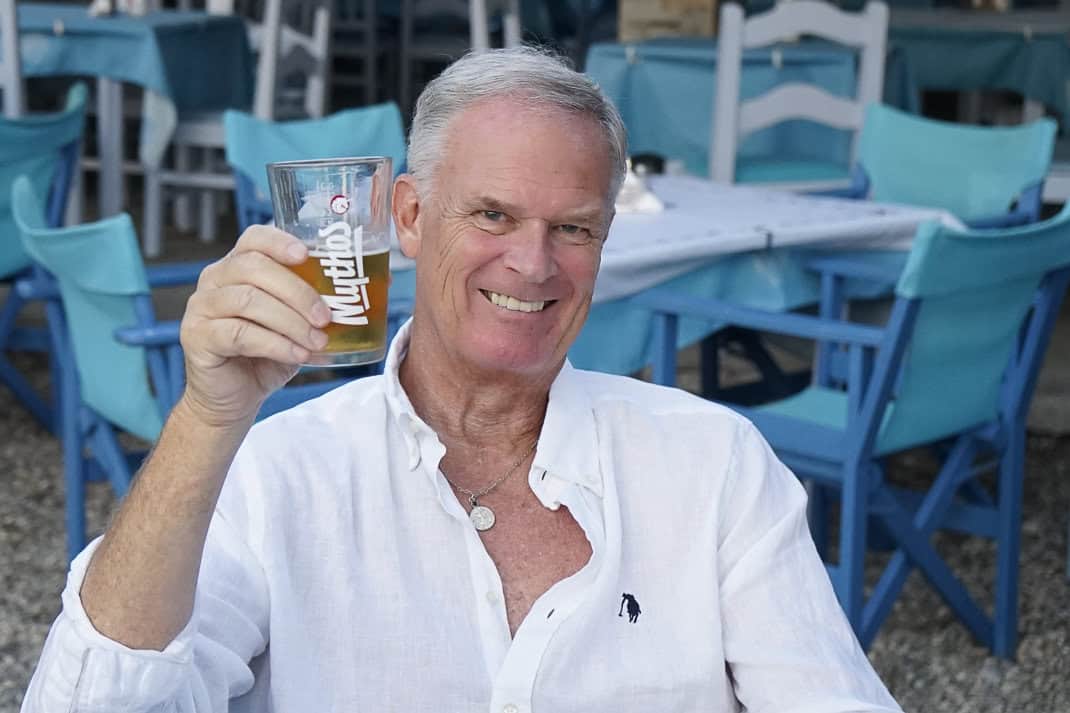
Do you want to go?
How do you get there? Numerous European cities have direct flights to Skiathos, 10 miles west of Skopelos. I paid €275 for round trip from Rome. Numerous ferry companies operate between Skiathos and Skopelos. The 30-minute journey ranges from €17-€25 one way.
Where do you stay? Panormos Beach Hotel, Panormos, 30-2424-022-711, Hotel | Panormos Beach Hotel Skopelos, info@panormosbeach.com, info@panormosbeach.com. Located a 30-minute, €20 taxi ride from Skopelos’ port, Panormos Beach isn’t just one of the best hotels on Skopelos, it’s one of the best hotels I’ve stayed in Europe. It features an infinity pool where you have a huge buffet breakfast with a friendly beach bar open all day. Big rooms with balconies and a two-minute walk down the driveway to the beautiful – but rocky – beach across the street. (Non swimmers beware: The sea goes deep after about 20 feet.) I paid €865 for seven nights. The price is higher in August.
Where do you eat? Stafilos Restaurant, Stafilos, 30-697-833-4099, https://stafilosrestaurant.com/, info@stafilosrestaurant.com, 12:30-11 p.m. Classic Greek dishes at inexpensive prices with a million dollar view of the sea.
When do you go? May, June or September. The weather is similar with a touch more rain but the sea remains warm until October. Avoid August. Greece is packed. Even little Panormos is crowded.
More information: Holiday Islands, 30-2424-029-036, www.holidayislands.com, info@holidayislands.com. Travel agency on Skopelos specializes in accommodations in the Sporades Islands chain.


September 19, 2024 @ 7:05 pm
Lovely!! Sounds perfect for one of our (winter?) beach getaways. We love and need ocean. CORRECT about Mama Mia. Yech.
September 20, 2024 @ 11:26 am
Thanks, Michael. Don’t go in the winter. The island shuts down at the end of October. Greece is awful in winter unless you like rain and playing backgammon with shepherds.
October 9, 2024 @ 9:35 am
Ive been traveling with a camper throughout Greece the last 2 mos. Thanks for your piece on Skopelos. I also recommend Galaxidi on the mainland and Pylos which is bigger but perfect seaside towns. Well fed cats too.